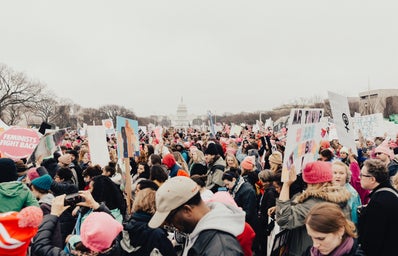The purpose of this article is to be informative and educational. All of the information provided in this article was gathered from unbiased and trustworthy sources such as the United Nations and NASA of which links are provided at the bottom of this page. This is not a political piece.
What is Climate Change?
Climate Change is the increase in the mean temperature around the globe and is arguably the greatest threat to the longevity of the human population that we are seeing today. Results of global temperature rise include melting of the ice caps, rising sea levels, droughts, more intense natural disasters such as wildfires and hurricanes, among other effects surrounding agriculture, infrastructure, and ecosystems. Overall global temperatures have been one the rise since the Industrial Revolution (1760-1820/1840) and the United Nations reports that “from 1880 to 2012, the average global temperature increased by 0.85°C.” Reports in 2018 claim that capping global temperature rise at 1.5°C instead of the previous goal of 2°C would be more beneficial to society and many ecosystems around the globe, though it would require immediate action to halt carbon emissions. It would also avoid/lessen many of the harmful impacts (though not all) if the rise in global temperature were to be stopped at 1.5°C instead of 2°C.
What is the main cause of Climate Change?
The Intergovernmental Panel on Climate Change (IPCC) performed an objective study on Climate Change and found indisputably that the cause is the emission of greenhouse gases caused by human activities. Carbon dioxide is the most prominent, and therefore dangerous, greenhouse gas because it traps heat from the sun in the Earth’s atmosphere instead of allowing the heat to escape into space, heating the surface of the Earth more than it is meant to be, causing what is known as the “greenhouse effect.” Increased carbon emissions are caused by the following according to the 2017 United States Environmental Protection Agency (note: these numbers are specific to the United States of America):
-
Transportation (28.9%) – burning fuels such as gasoline and diesel for cars, trucks, planes, and other modes of transportation causes the largest greenhouse gas emissions.
-
Electricity (27.5%) – burning coal and other fossil fuels provides approximately 63% of our electricity.
-
Industry (22.2%) – production of certain goods requires the burning of fossil fuels for energy results in the emission of greenhouse gases.
-
Commercial/Residential (11.6%) – the handling of waste in homes and businesses as well as burning fossil fuels for heat causes the emission of greenhouse gases.
-
Agriculture (9%) – livestock and production of foods like rice cause greenhouse gas emissions.
How can Climate Change be stopped?
Net carbon dioxide emissions made by humans would need to fall by 45% by 2030 in order to prevent the average global temperature from rising above 1.5°C. Actions such as growing forests worldwide can help absorb the remaining emissions of carbon dioxide from the atmosphere, reaching net zero by 2050.
What will happen if we do nothing?
Rise in global temperatures will result in extreme weather conditions such as periods of time being colder than normal or hotter than normal. Extremes in cold and hot temperatures can result in more intense events such as hurricanes. Other extreme weather events such as rainstorms, droughts, and heat waves will increase or intensify, and seasonal changes will be affected as well. The intense heat that comes with climate change is also capable of spreading tropical and subtropical pathogens to more places, affecting areas that would have otherwise been protected from the diseases. According to the journal Natural Climate Change, global warming is estimated to advance the disappearance of half the animals and a third of the world’s plants due to altered migratory patterns and spread of diseases.
Ice melting from rising global temperatures has caused the permafrost (or permanently frozen ground) to thaw, releasing ancient microbes. LiveScience.com recalls long-frozen deer carcasses becoming unthawed in 2016, resulting in an anthrax outbreak. Along with the threat of age-old microbes, ice is melting in the arctic, reflecting less solar energy back into space, and as a result accelerating the melting process. Melting ice not only accelerates global temperature rise, but causes sea levels to rise as well. It is estimated by the IPCC that if action is not taken to halt Climate Change, sea levels globally could rise up to three feet by 2100.
Rising sea levels is not the only problem Climate Change will cause the ocean. The more carbon dioxide is in the atmosphere, the more acidic the ocean becomes, threatening ecosystems and sea life. The acidic effect of carbon dioxide in the ocean is similar to that of a carbonated drink. It has even been found in some places that sea snails’ shells are already being dissolved due to ocean acidity. The bleaching of coral reefs has also been the result of ocean temperatures being too warm and/or ocean acidity. Coral reefs are capable of recovering from bleaching, but the more often it occurs, the less likely it is that the coral will recover.
Along with the weather extremes, ice melting, rising sea levels, and threats to ecosystems, greenhouse gases, such as carbon dioxide, that are currently in the atmosphere will remain there for several hundred years if humans do not attempt to remove them from the atmosphere.
What can I do?
Industries, not individuals, are the largest cause of carbon emissions globally, so being dedicated to limiting carbon emissions for companies, such as implementing a carbon tax, is going to be the most effective form of prevention toward the rise of global temperatures, and that is done through government and policy.
Individual people can do different things to decrease personal carbon footprints, though, such as:
-
carpooling/biking/taking public transportation – this is a BIG thing individuals can do, especially in the United States of America because transportation is the #1 cause of fossil fuel emissions in the U.S.
-
recycling/composting – landfills cause methane emissions, which is a greenhouse gas, so avoiding putting items in the landfill will decrease methane emissions
-
avoiding meat – agriculture and livestock (such as cows) causes a lot of greenhouse gas emissions like methane and carbon dioxide, and along with global population growth, that percentage is expected to increase, so avoiding meat is environmentally responsible!
-
donating/selling used clothes – avoiding putting items in the landfill will decrease methane emissions
-
reducing plastic usage – plastic takes 1,000 years to decompose and releases harmful toxins into the soil, polluting soil and sources of water as well, harming animals who drink from those water sources
-
washing clothes with cold or warm water (not hot) – heating takes the burning of fossil fuels, so avoiding heating things will result in less greenhouse gas emissions
Sources:
https://www.un.org/en/sections/issues-depth/climate-change/index.html
https://climate.nasa.gov/effects/
https://www.nationalgeographic.com/environment/global-warming/greenhouse-gases/#close
https://www.epa.gov/ghgemissions/sources-greenhouse-gas-emissions
https://www.livescience.com/37057-global-warming-effects.html



